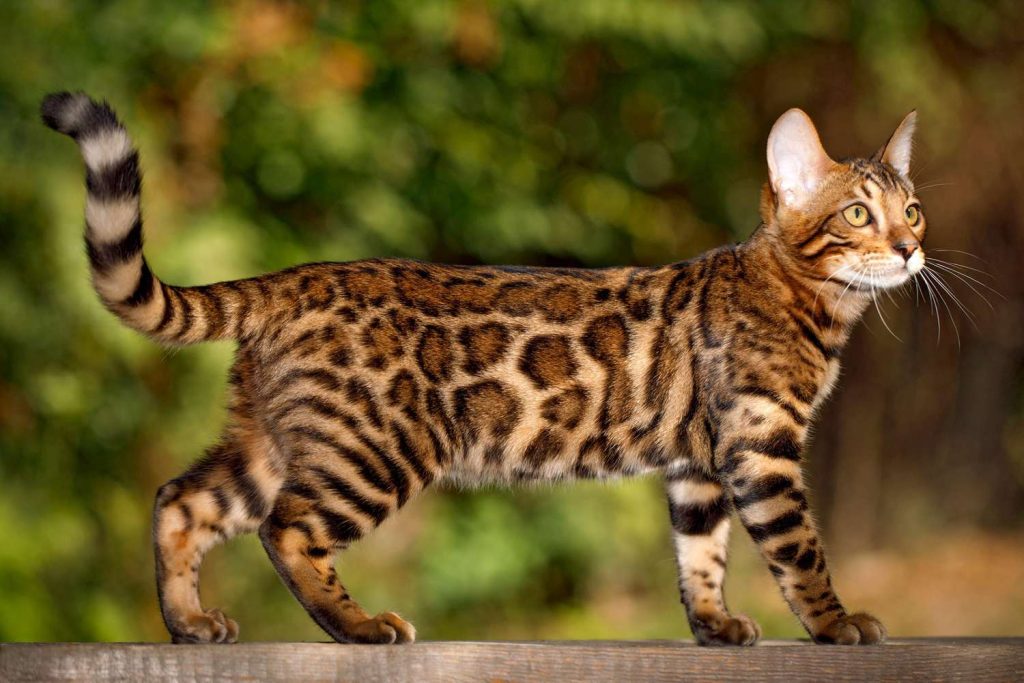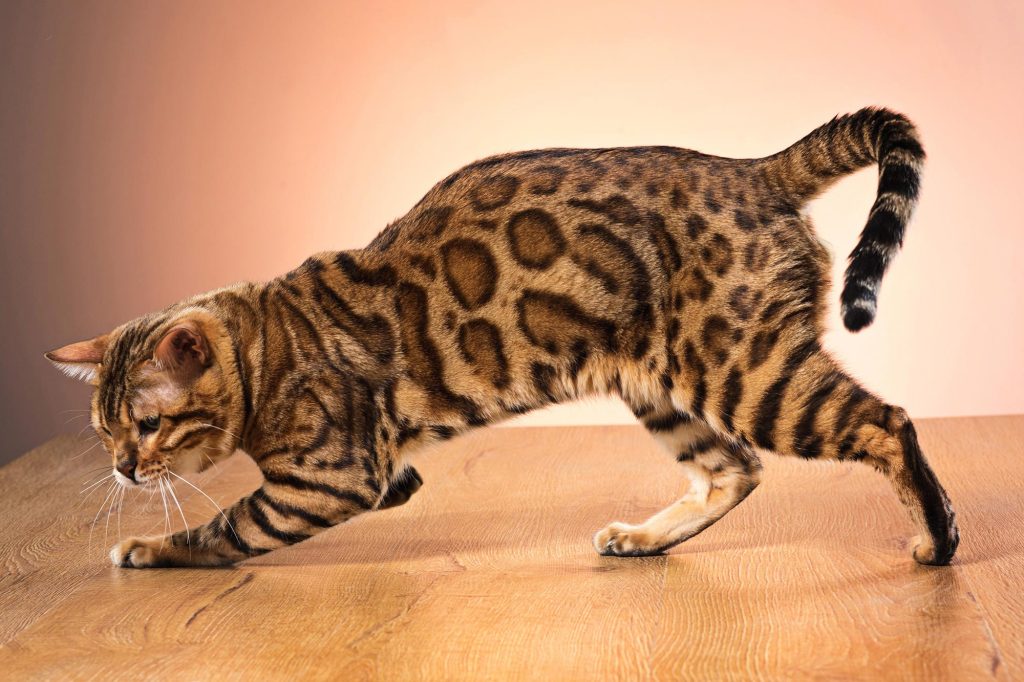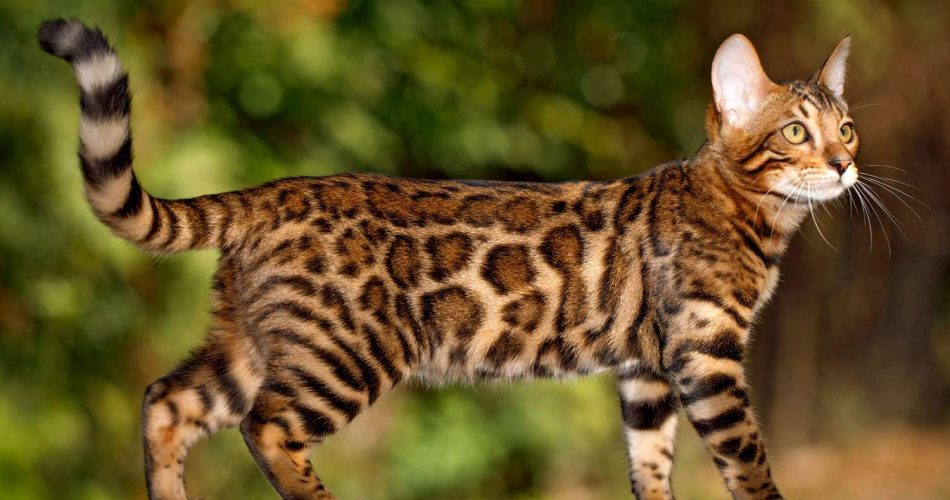Bengal cats are a breathtaking breed known for their wild appearance and lively personalities. With their leopard-like coat, high energy levels, and affectionate nature, Bengals are among the most sought-after cats for those looking for a unique and playful companion. Here’s a detailed look at Bengal cats, including their origins, traits, and what makes them a fantastic pet for the right owner.
The Origins of Bengal Cats
Bengal cats are a hybrid breed, originally developed in the 1960s by crossing domestic cats with Asian leopard cats (a small wild feline native to Asia). The goal was to create a cat with the stunning spotted or marbled coat of a leopard but with the temperament of a domestic cat. By the 1980s, selective breeding had refined the Bengal cat into the beloved pet we know today.
The name “Bengal” is derived from the scientific name of the Asian leopard cat , emphasizing the breed’s exotic lineage. Despite their wild ancestry, modern Bengals are fully domestic cats with a vibrant personality and a love for human interaction.
Unique and Striking Appearance
Bengal cats are instantly recognizable due to their exotic, leopard-like coat. Their short, sleek fur has a luxurious texture and comes in a variety of colors, including brown, silver, and snow. Their coat patterns can either be spotted, like a leopard, or marbled, resembling swirling patterns on a stone. The distinct markings make Bengals one of the most visually striking cat breeds in the world.
Their muscular bodies, large almond-shaped eyes, and expressive facial markings contribute to their wild, jungle-like look. Bengals are medium to large cats, with males weighing between 10 and 15 pounds and females slightly smaller. Their physical elegance is matched by their graceful movements and athletic build.

Personality and Temperament
Bengal cats are known for their outgoing, curious, and energetic personalities. These cats thrive on activity and are often compared to dogs due to their social and interactive nature. They love to explore, climb, and play, and they need plenty of mental and physical stimulation to stay happy. Bengals are incredibly intelligent and can learn tricks, play fetch, and even walk on a leash with the right training.
While they are active and adventurous, Bengal cats are also affectionate and enjoy spending time with their owners. They are highly loyal and tend to form strong bonds with their human families. Bengals are not the type of cat to sit quietly in a corner—they want to be part of the action and will follow their owners around the house, curious about everything happening around them.
Compatibility with Families and Pets
Bengal cats are an excellent choice for families, especially those with active lifestyles. They are great with older children who can engage with their playful energy. Bengals also tend to get along well with other pets, including dogs, provided they are introduced properly. However, their high energy and strong prey drive may make them less suitable for homes with small animals like birds or hamsters.
Health and Maintenance
Bengal cats are generally healthy, but like all breeds, they have some health concerns to be aware of. Common issues include hypertrophic cardiomyopathy (a heart condition) and progressive retinal atrophy (a genetic eye disease). Reputable breeders screen for these conditions, so it’s essential to adopt from a trustworthy source.
When it comes to grooming, Bengal cats are relatively low-maintenance. Their short, soft coats require minimal brushing, as they are naturally sleek and shiny. However, regular nail trimming, dental care, and ear cleaning are important for their overall well-being.

Diet and Exercise Needs
Bengal cats are highly active and need a protein-rich diet to support their energy levels. High-quality wet or dry cat food, preferably with meat as the primary ingredient, is ideal. Bengals are also known to enjoy raw or freeze-dried food as part of their diet, but consult your veterinarian before introducing any new foods.
Exercise is a must for Bengals. Without enough stimulation, they can become bored and develop behavioral issues. Interactive toys, climbing trees, and puzzle feeders are excellent ways to keep them entertained. Bengals love heights, so providing vertical spaces like shelves or cat trees will help satisfy their climbing instincts.
Bengal cats need an environment that caters to their energy and curiosity. A Bengal-friendly home includes plenty of space for climbing, jumping, and playing. Interactive toys and scratching posts will keep them busy, and a safe outdoor enclosure or leash training can give them the chance to explore the outside world.
These cats thrive on companionship, so they do best in homes where they aren’t left alone for long periods. If you have a busy lifestyle, consider adopting a second cat to keep your Bengal company.

Conclusion
Bengal cats are a stunning combination of wild beauty and affectionate charm. Their leopard-like coats, playful energy, and intelligent nature make them stand out from other breeds. While they require a lot of attention and activity, they reward their owners with endless entertainment, loyalty, and love. If you’re ready for an active and engaging feline companion, the Bengal cat might be the perfect addition to your home. With proper care and a stimulating environment, these exotic cats will bring excitement and affection to your life.
